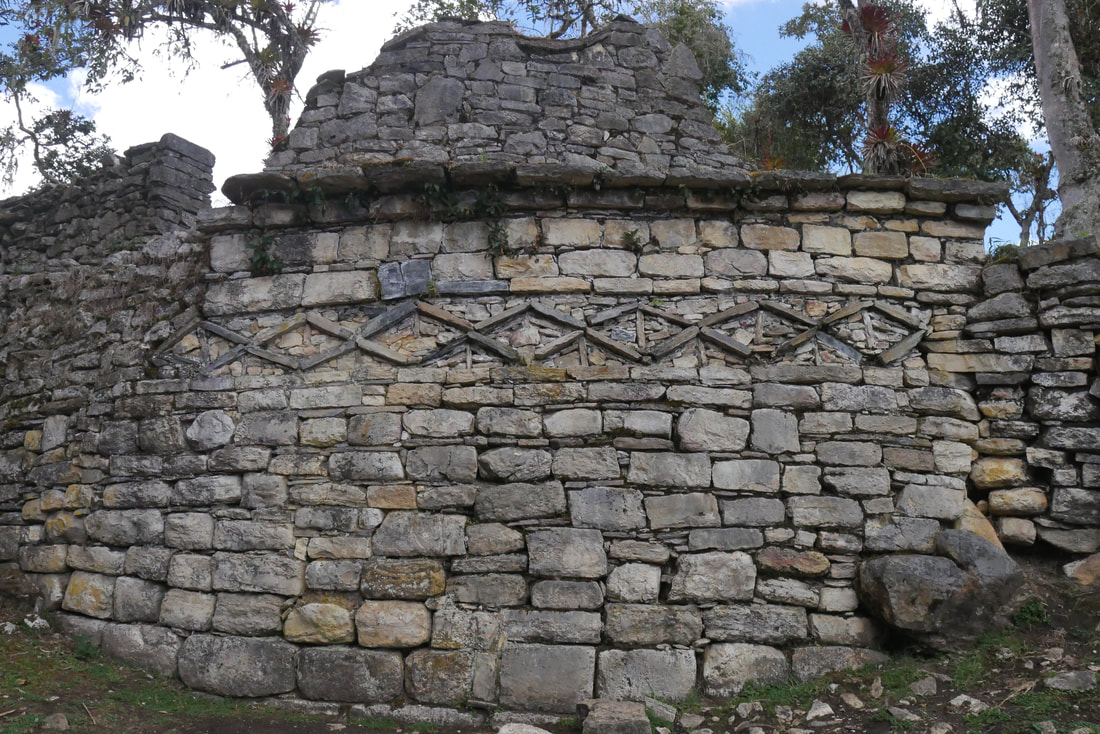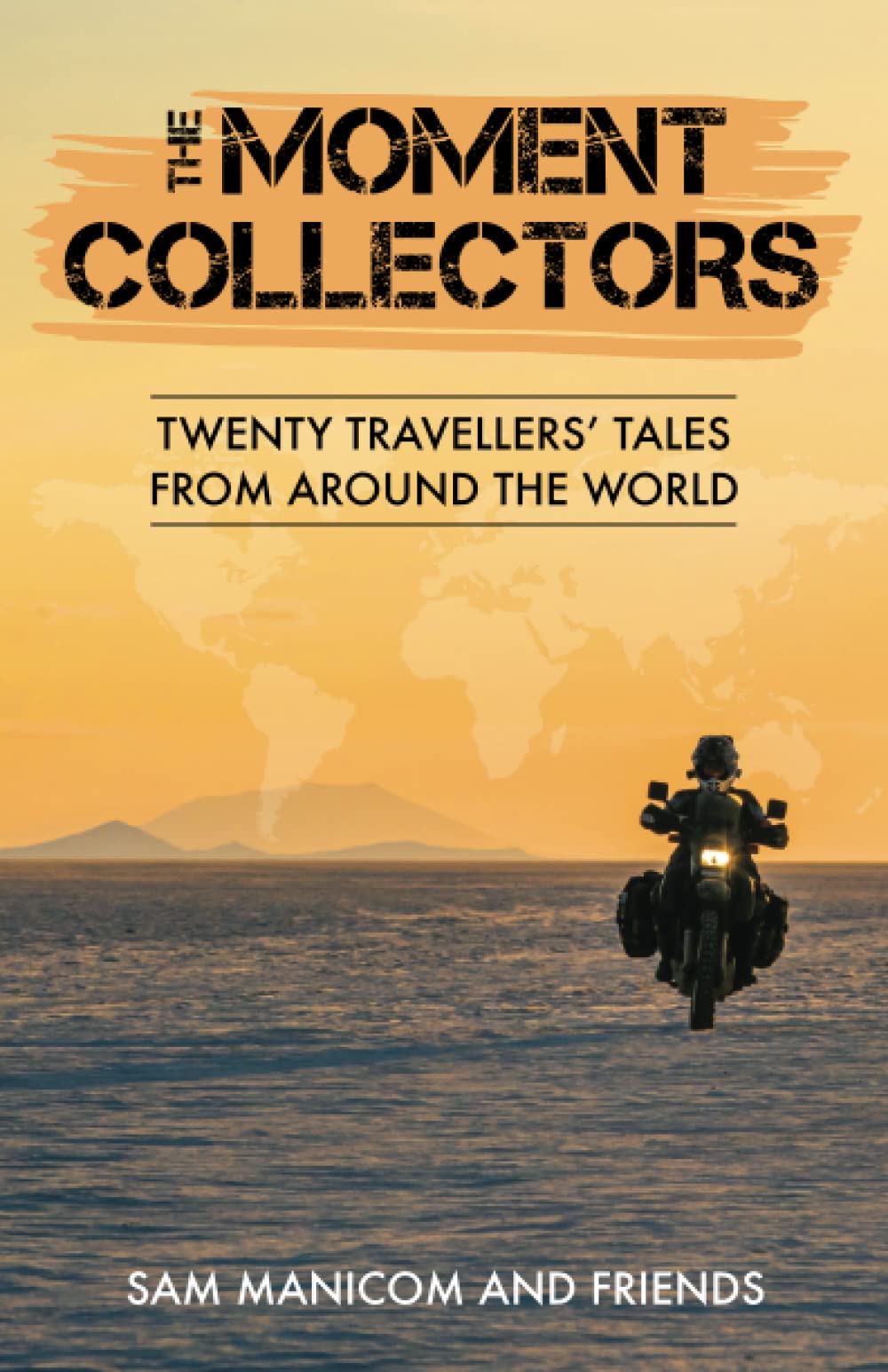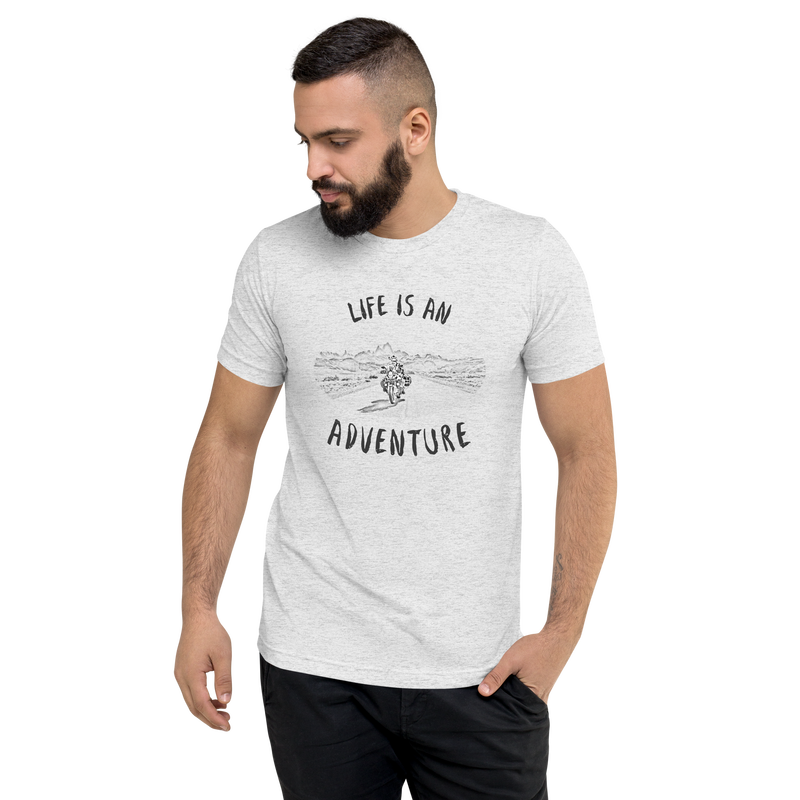By MarisaNothing has come easy for us in Peru. From underdeveloped road conditions, to people just shrugging their shoulders when telling us that the road is closed, and then still others simply making things up when we ask for directions because they'd rather say something than nothing, this place has definitely tested our patience. But alongside Peru's challenges come great rewards, and we firmly believe that despite the obstacles, this country and its incredible people are worth it. And the perfect example of that has been the sites and cultures we've seen here in the north, or as I like to call it, the Land of the Dead, for reasons which I will explain later. Peru may be poorer, more polluted, and has less-developed infrastructure than its neighbors to the north such as Ecuador and Colombia, but there is a reason why people from around the world flock here. There is something deeply special about this country. It's as if Peru is an experience to be felt. Once crossing the border, we noticed that the music started to have a folkish rhythm to it that sounds more indigenous than latin, and the people have a gorgeously stoic look to them, as many of the Andean locals are finely dressed in alpaca ponchos and wide-brimmed hats. There is also something majestic, ancient, and mysterious about the mountains and terraced fields of this country, as if every stone were placed there long ago by someone with a particular intention. And sometimes while riding around, I can smell incense burning in the villages, and I will forever associate that smell with the mystic aura of this place. The cultures here are old, and the Spanish may have left their mark, but it's just a scratch against the monuments and terraforming that the indigenous people have built. And our first experience with this strong indigenous presence was the fortified city of Kuélap. Most tourists don't come to the north of Peru. But if they do, they don't come without visiting Kuélap since it's considered to be Peru's “second Machu Picchu". Both are mountaintop pre-hispanic ruins, but really, the two cities are unrelated. Built by the Chachapoyas (a.k.a. Cloud Warriors), not the Inca, Kuélap was mostly constructed from 600-1100 A.D., and is architecturally unique as nearly all of its 550 stone structures are circular. The city may have had at one point as many as 300,000 inhabitants, and was well fortified by a 10-20 meter high wall surrounding it (32 to 65 feet), which is absolutely enormous when seen in person. It shocks me that even these walls could not withstand the might of the Inca who conquered it in 1470, though the Inca would fall to the Spanish a mere 60 years later, abandoning the city. Although some of Kuélap's stonework is intricate, its walls and stone construction cannot compare to the perfect masonry that the Inca mastered. Still, Kuélap is uniquely impressive for several reasons: it has stunning views of the surrounding cloud-forested mountains (it's 1,000 ft. higher than Machu Picchu and much older), some of its structures are massive, such as its walls and Templo Mayor which is shaped like an inverted cone, and best of all, unlike Machu Picchu, almost no one visits Kuélap. If the newly-built cable car goes out, as it did when we went, you may even have the site all to yourself. Kuélap was the first archeological site we visited in Peru, and it was also the first time that Tim and I realized how magical this country is. After Kuélap, we took a detour to an infrequently-visited region where we heard we might get the keys to the “Village of the Dead", or Pueblo de los Muertos. That just sounded too enticing for us to pass up, but as we made our way there, we came to a road block with a construction worker woman holding up a red sign that said PARE, the Spanish equivalent to STOP. Stopping for construction is normal in Latin America, and as the woman held up a finger to show us to wait a moment, we patiently did so, as it usually only takes a few minutes before we're let through. But as the minutes dragged on, Tim turned to me and said, “Can you go ask that lady how long it will be? I just want to be sure she meant one minute as opposed to one hour." So I did just that, but after conversing with the woman for quite some time, I came back to tell Tim the bad news. “She said the road is closed until 1:00 pm." It was 9:30. It turns out that construction in Peru runs on normal working hours, so that means all day long (there is a short lunch break between 1:00 and 2:00), seven days a week. And they don't tell you the road is closed until you get there, of course. So Tim and I got out our camping chairs and made ourselves comfortable just as a busload of sixth graders on a field trip pulled up, also having to wait more than three hours for the workers to go on lunch break. This impromptu delay actually turned into an incredible experience in disguise, because as the children disembarked from their bus, they found that Tim and I were the most interesting thing around, and decided to interview us for three hours. It was the closest I've ever felt to a celebrity. They took hundreds of selfies with us and the bike, and filmed our answers to their questions on their phones. I'm sure their teachers are going to give them a test on our lives once they get back to school. Apparently, Tim and I are the only ones who get upset over road closures and things not going our way, as Peruvians seem to have an uncanny ability to just go with the flow. After the road opened up again, we said our goodbyes to the field trippers, and made our way to the Village of the Dead. The rumors were true: because the Pueblo de los Muertos is such a difficult site to get to, no one goes, and so you have to pick up the keys at the tourist office of the nearest village (Lámud) to get in. This also means you have the ruins completely to yourselves. The Pueblo de los Muertos is made up of several cliffside walled structures built by the Chachapoya people between 1100 and 1350 A.D. It gets its name because it's where mummies and human bones have been found. This is also the reason why there are keys to get in, because looters have ransacked the site over the years, and so gates have been put up to keep people out. Despite the looters, there are still quite a few human remains to be seen there. This “Village of the Dead" was built on a cliff, and when I say built on a cliff, I mean at one point I stopped dead in my tracks and Tim turned back to me and said, “Come on. Aren't you going to see the rest?" I shook my head and sat down where I was, telling myself not to look over the edge for fear of getting vertigo, and then watched Tim climb along the cliff, surely to his imminent death. Luckily, neither of us fell, and no new bones were added to the village's collection. We camped at the trail head with a gorgeous view of the Gocta Waterfall in the distance and slept under the stars (and rain) trying not to think about the dead people just down the trail from us. The next day we headed through some difficult roads to find the famous Sarcophagi of Karajía. Like at the Pueblo de los Muertos, the Chachapoya people had a tradition of mummifying the dead, usually in a sitting position, and wrapping them in cloths or placing them in clay urns. This was actually a tradition throughout Peru, including the Inca, and these mummies were sometimes kept in the house so that offerings and food could be given to the ancestors during meals or on special occasions. Other times, the mummies were protected by being buried or stored in a safe place such as on a cliff side. In fact, South Americans were mummifying their dead long before the ancient Egyptians. And if the person was important, such as those at Karajía, they were placed in an elaborately-painted sarcophagus, some as large as 2.5 meters tall (over 8 feet), and placed on a cliff with an eternal view of the beautiful countryside. This is why I will always remember this area of Peru as the Land of the Dead. It seems that at every turn, there are more urns and more mummies. At the museum of Leymebamba, there were over a hundred mummies, some of which had faces sewn onto their cloth wrappings. There were even mummies of babies, dogs, and wild cats. Clearly, remembrance and respect of the dead was very important to these cultures. Today we are in Cajamarca, and yesterday we visited a series of mountain-side carvings here that have been used as a mausoleum for mummies and urns for more than 2,000 years. It's known as the Ventanillas de Otuzco. Tomorrow we will slowly make our way south, out of this archeologically-rich region, and into the high-altitude Andes where we will hopefully come across glaciers. Though we are in no way leaving the Land of the Dead yet, we will be setting our sights on more natural wonders as opposed to cultural ones in the coming weeks. As always, stay tuned, and we'll keep you posted. Become a Patron! |
Follow UsRide with us from Chicago to Panama!
2Up and Overloaded Get inspired by the tale that started it all:
Maiden Voyage 20 author's tales of exploring the world!
The Moment Collectors Help us get 40 miles further down the road with a gallon of gas!
Become a Patron for early access to our YouTube Videos!
Subscribe to our YouTube Channel!
Subscribe to our Blog by Email
|
2Up and Overloaded
Join our clan of like-minded adventurers...
Proudly powered by Weebly
Designed by Marisa Notier








































